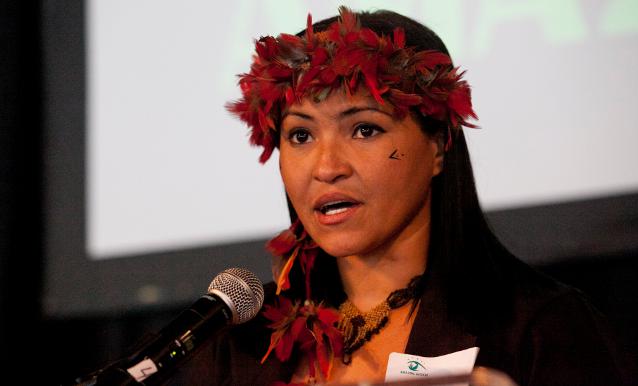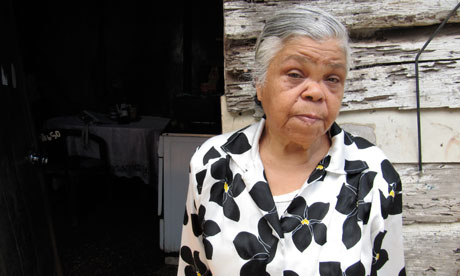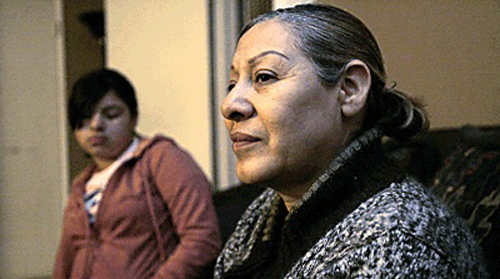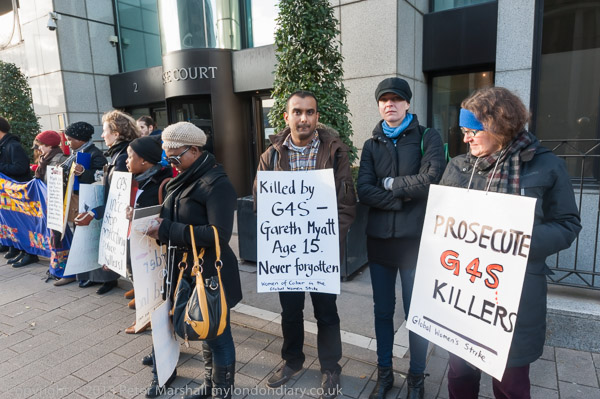
Many have watched the video of Lt. John Pike, of the University of California Davis police department, casually spray a line of seated, peaceful protesters, and many have expressed horror. Many have expressed horror as well at the decision by the University President Linda Katehi to call in the police in the first place.
The horror is real and well deserved, as are the condemnations. But the surprise and shock are something else altogether. The violence committed was absolutely ordinary. Ask people of color across the United States. In particular, ask immigrant women of color.
Violence by police officers, by detention center staff, by the State, against immigrant women of color happens every day. The United States has declared war on immigrant women of color, and like so many wars of recent years, the war is identified as a form of peace making. Thus, the United States is `really’ waging peace against immigrant women of color. If they have scars, if they suffer trauma, if they lose their children or their partners, if they are sexually abused … it’s the women’s fault. They shouldn’t have opposed the peace process.
Institutional violence against women of color immigrants is ordinary. It happens every day in immigrant detention centers, like T. Don Hutto Family Residential Center in Taylor, Texas. Sara, Kimberly and Raquel `Doe’ are three asylum seekers currently suing Hutto’s owner/operator, Corrections Corporation of America, CCA, for the sexual violence and abuse they suffered while `guests of the system.’ They are part of a fast growing sisterhood, a nation of Does.
Police and State violence against women of color immigrants happens every day on the streets. Ask Susana Ramirez, who never had trouble with the law in either the US or Mexico, until one night she was stopped for … basically for nothing. She changed lanes without signaling. Next thing, her daughters were whisked away, and Ramirez faced deportation. Threatened in Durango, Ramirez was threatened in Illinois. She is part of a fast growing sisterhood as well, of women of color immigrants who face, and often face down, the culture of fear and intimidation.
State violence against women of color immigrants happens every day, when families are split up by ICE, when children are taken away and lost into the so-called foster care system. Those children are disappeared, kidnapped, and their parents are left to search for them. In the first six months of 2011, 46,000 parents of US-born citizens were deported. What happened to their children? What is happening to their children?
Sometimes, the mothers, like Clara and Josefina, sisters, are taken away, and the children, effectively, vanish. Other times, the mothers are US-citizen partners to men who are deported and are left stranded. That the children are US citizens is irrelevant to the State. Where once nations recognized citoyens du sang, citizens of blood, now they create immigrants of blood. Citizenship doesn’t matter: it’s what in your bones, in your blood, in your DNA.
Some say the brutality of the immigration detention system is inhumane. It’s worse than inhumane. It’s humanity-to-come, the promised land. Militarized police, militarized borders, increased sexual violence and abuse against immigrant women of color, increased and intensified systemic racist and sexist violence directed at immigrant women of color … and for what? To keep the nation safe, free and democratic. Behind those words is the real promise: this is what humanity will look like.
In Davis, police and University have committed violence casually and even comfortably. In so doing, they are not alone and they are not exceptional. In fact, they’re quite ordinary, and therein is the horror.
(Image Credit: PBS Frontline)







